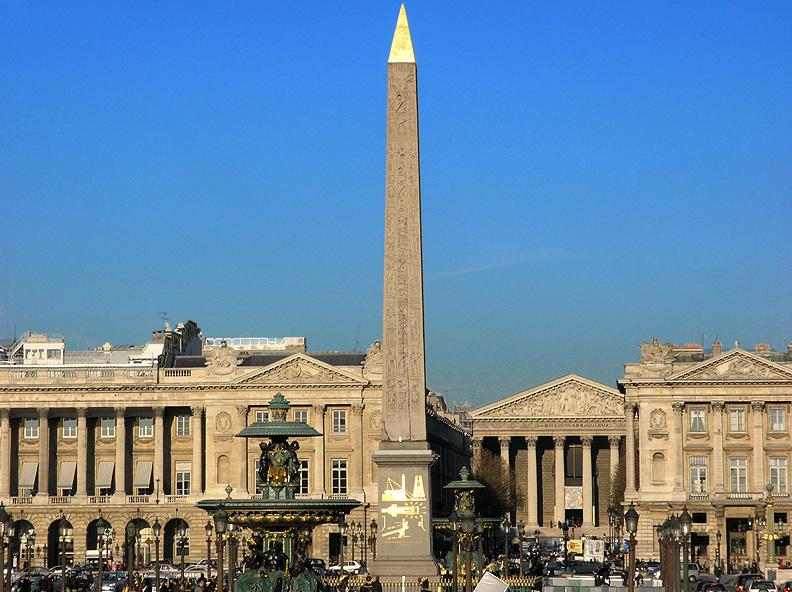The guillotine was installed and public executions abounded, including the beheading of Marie-Antoinette and King Louis 16th.
During the reign of terror in the summer of 1794 more than 1300 people were executed publicly in the square, allegedly.
 |
| A gruesome scene: the beheading of Louis 16th at Place de la Revolution, now called Place de la Concorde. |
After the turmoil of the revolution the square was renamed Place de la Concorde, the word concorde indicating the new era of harmony between people.
An impressive obelisk and two very beautiful and ornate fountains adorn the square which is located at the end of the Champs Elysees, with the Tuileries Gardens at the opposite end.
The obelisk was a gift from the Egyptian government and centuries ago it stood at the entrance to the Luxor temple. It is decorated with ancient hieroglyphics.
The spectacular fountains have an obvious water theme and feature statues of the Greek God Triton, messenger god of the big sea and father of Poseidon. There are also statues of naiads, Greeks nymphs who are bound to fresh water such as streams, wells and brooks.



